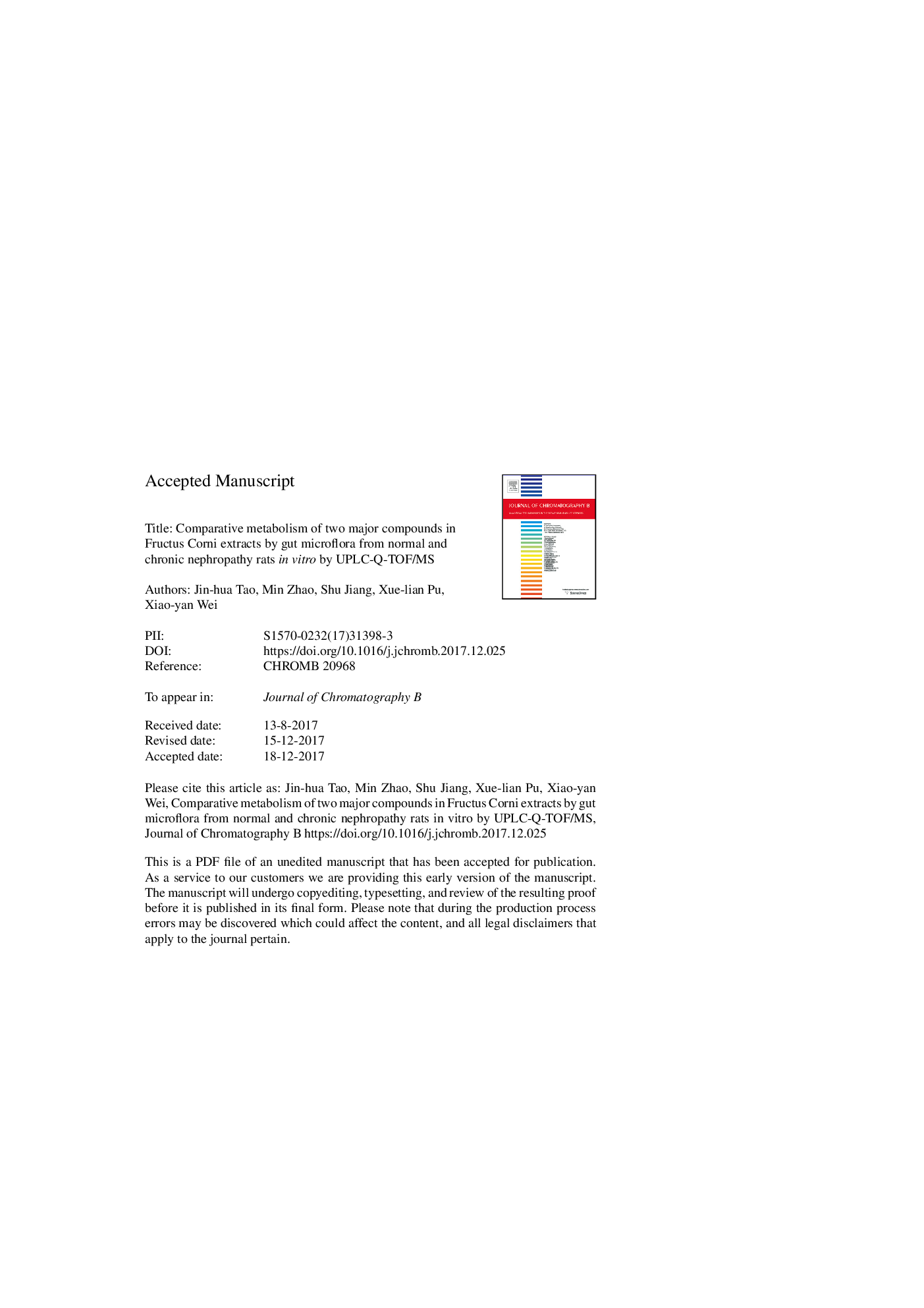| Article ID | Journal | Published Year | Pages | File Type |
|---|---|---|---|---|
| 7615528 | Journal of Chromatography B | 2018 | 25 Pages |
Abstract
Herbal medicines are widely used as therapeutic products in many countries. Fructus Corni, a traditional herb medicine, has been clinically used to cure chronic nephropathy for thousands of years. It could be converted by gut microflora in vivo to shape its pharmacological profiles. Thus, metabolic profiles of major active constituents in Fructus Corni extracts by gut microflora from rats in healthy and nephropathy state were firstly investigated in vitro by ultraperformance liquid chromatography coupled with quadrupole time-of-flight mass spectrometry (UPLC-Q-TOF/MS) in this study. According to the features of protonated ions, five metabolites (M1, M2, M3, M5 and M6) were found and preliminarily authenticated. Intestinal bacteria were capable of converting N0 (loganin) to its aglycone M1 (loganetin). The latter was further hydrogenated to the corresponding M2 (hydrogenated loganetin) and subsequently to M3 (hydrogenated and demethylated loganetin) by demethylation; While M5 (demethylated morronisid aglycone) and M6 (dehydroxylated morronisid aglycone) were identified as the two metabolites of N4 (morronisid) through demethylation and dehydroxylation. Gut microflora from healthy and nephropathy rats could degrade loganin and morronisid to the above metabolites. However, healthy rat intestinal bacteria showed more powerful degradation and much more amounts of M1 and M6 were obtained in their samples. Additionally, this work demonstrated that UPLC-Q-TOF/MS approach connected with MetaboLynx⢠analysis software was rapid and reliable for screening and authentication of natural product metabolites.
Related Topics
Physical Sciences and Engineering
Chemistry
Analytical Chemistry
Authors
Jin-hua Tao, Min Zhao, Shu Jiang, Xue-lian Pu, Xiao-yan Wei,
